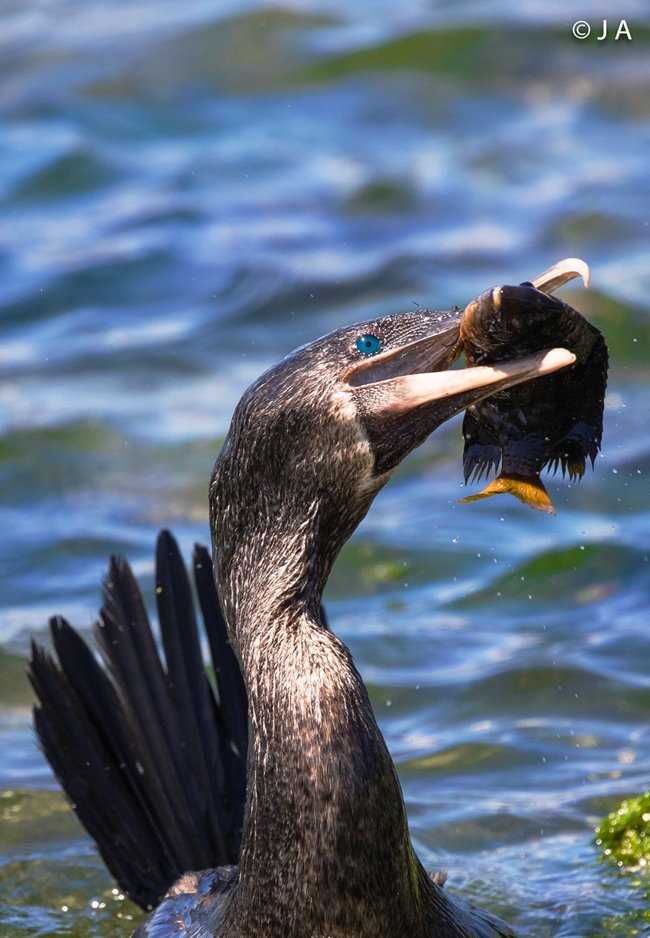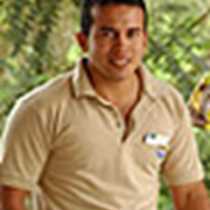We finally arrived to the youngest part of the archipelago. During our navigation, one could watch the gigantic volcanoes that emerged from the ocean millions of years ago. Baptized in honor to the Queen and King of Spain, Fernandina and Isabela Islands are home of six of the most active volcanoes in the world.
Early in the morning our guests had the opportunity to spot some sea birds surfacing the waves and the volcanic scene along the coast. After breakfast, we headed to Fernandina Island. It was sunny and a bit windy, yet on our way there, we could see flightless cormorants and sea lions from the zodiac. Walking along the white sand, we encountered a few baby Galapagos sea lions, flightless cormorants nesting on the cliffs and we were very fortunate to see one of the cormorants catch several yellow tailed damsel fish and eat them right in front of us. A Galapagos hawk was part of the farewell committee as we left the island.
In the afternoon we dropped anchor in Punta Vicente Roca at Isabela Island, right next to Ecuador volcano; it looked impressive with strong winds and some wave action breaking along the coastline. We soon went on a zodiac ride along the coast where we spotted a couple of large manta rays, one ocean sunfish, a few blue footed boobies, Galapagos fur seals and brown pelicans resting on the rocks. With the last beams of sun, the National Geographic Endeavour moved north crossing the Equator. In a special ceremony we shared great moments with our guests “crossing the Equator line” and enjoying a beautiful sunset together with a wine tasting event on the bow of our mother vessel.







